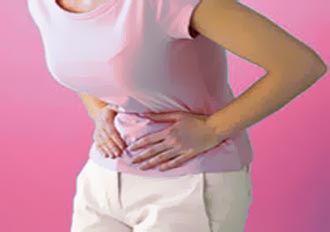
Food poisoning is common problem that could make our stomach hurt. In this article, I’ll share tips from Consumer.org.my to prevent food poisoning.

Prevent Food Poisoning
Many common diseases of the intestines are spread through food. Sometimes people who harvest, handle, or prepare food pass germs from their hands into the food. Sometimes germs and moulds in the air begin to grow in the food and it goes bad (spoils). This happens when food is not stored or cooked properly, or when it gets old.
To prevent the spread of germs in food
- Wash your hands with soap and water before preparing food, before eating, and before feeding your children.
- Wash or peel all fruits and vegetables that are eaten raw.
- Do not let raw meat, poultry, or fish touch other food that is eaten raw. Always wash your hands, knife, and cutting board after cutting these meats.
- Avoid coughing, spitting, and chewing things, like gum, near food so your saliva does not get in the food.
- Do not allow animals or pets to lick dishes or utensils clean. If possible, keep animals out of the kitchen.
- Throw food out when it spoils.
| Food poisoning |
Here are some of the most common signs of spoiled foods
- Bad smell
- Bad taste or a change in taste
- Changed colour (for example, if raw meat changes from red to brown)
- Many bubbles on the top (for example, on the top of old stew or soup) along with a bad smell
- Slime on the surface of meat or cooked foods
Cooked food
Cooking food kills germs. All meats, fish, and poultry should be well cooked. Nothing should look raw or have a raw colour.
If the food begins to cool, the germs quickly start to grow again. If the food is not eaten within 2 hours, reheat it until it is very hot. Liquids should be bubbling, and solids (like rice) should be steaming.
Food storage
Whenever possible, eat freshly prepared food. If you store food, keep it covered to protect it from flies and other insects, and dust.
Protecting yourself against food poisoning
Cook meat, pork, and poultry thoroughly to kill salmonella. These bacteria are heat-sensitive and are destroyed at cooking temperatures of 140oF or higher. To be completely safe, cook poultry until the meat reaches 180oF to ensure the destruction of any salmonella that may be present. Boneless parts should be cooked to an internal temperature of 160oF. When poultry is cooked thoroughly, juices will be clear, not pink.
To make sure that meat and poultry are cooked all the way through, you can use a meat thermometer to measure internal temperature. Insert the tip into the thickest part of the meat, avoiding fat and bone. For poultry, insert the thermometer tip into the thick part of the thigh next to the body.
Your refrigerator temperature should be below 40oF, and your freezer should be set at 0oF. Always allow frozen food more time to cook — generally 1 1/2 times longer than food that has been thawed.
Always thaw meats in the refrigerator, never on the kitchen counter. The warmth of the kitchen and exposure to other foods creates ideal conditions for growth and spread of bacteria. Meat and poultry thaw from outside to inside, so thawing your meat and poultry in the refrigerator will keep bacteria from growing on the outside while the inside thaws.
Cooked poultry that is not eaten immediately should be kept hot (between 140oF and 185oF) or refrigerated at 40oF or below. Slice the meat or poultry before refrigerating so it will cool quickly.
Reheat leftovers to at least 165oF before eating. Cover the pot to retain as much moisture and flavour as possible and to make sure the food will heat evenly all the way through.
Do not leave any food unrefrigerated for more than 2 hours. Never leave foods — particularly meats — in the oven overnight; microorganisms find the oven environment a perfect hatchery.
Should any meat or product have an off odour or an unusual colour or texture do not taste it. The microorganisms responsible for food poisoning cannot be tasted, anyway.
Source : Consumer.org.my